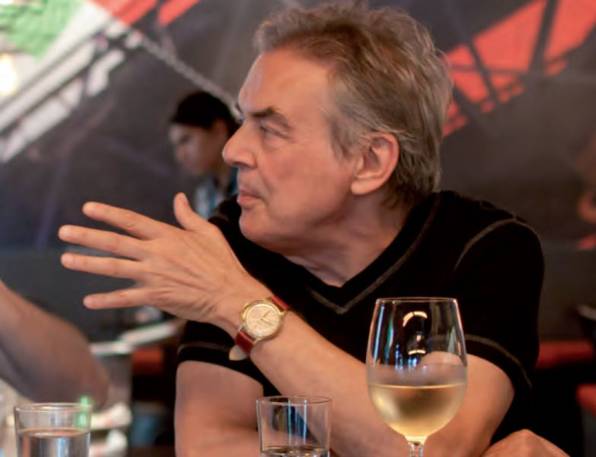


I met “il Maestro” at his home in New York, where he comes for short periods of the year to write, compose and meditate in solitude. He lives in a beautiful loft in a building of a former Hebrew school in the Jewish neighborhood bordering Chinatown, a few steps away from the Manhattan Bridge. As we spoke on his terrace, the high-pitched laughter of children from the schoolyard below mingled with the shrieks of the seagulls flying over the East River a few blocks away. Mauro Pagani is still learning, he says, and New York is the perfect place for such pursuits. It is also the best spot for him to study and play with other musicians.
We begin by talking about what music means to Italy and Italians, and how this relationshipevolved over time.
“Music is one of the great cultural riches of our country. I always say that music is a country’s second language. Of the two languages used to express a culture, music is the language tasked with transmitting its most irrational and emotional sides.
Our culture’s capacity to touch and be touched has been expressed by music in a sublime manner, with some exceptions. From the 1800s up until the 1950s we gave so much to opera – a genre that was so truly ours – and then up until the 1940s we had a great period of “la canzone,” which was not necessarily popular music, in fact, it was authored by sophisticated writers.
Nowadays you could say that our music is ‘casting around’; we are finding it difficult to coin our own powerful language to best express ourselves. The difficulty stems from the fact that we are expressing ourselves in a musical narrative suited to an evolution that, in a way, started without us.”
What do you mean? What kept us out of the evolution of contemporary music?
“We did! Italy literally heard the first African American records at the end of World War II, when the Fascist regime fell. For the twenty years before that, foreign music had been forbidden in our country, so the natural evolution of music – that is, encountering new cultures while hanging on to one’s roots – was stunted in our country. Pop music was born over the next thirty years, during a fecund period of musical fusion: the encounter between European and African American cultures, for example, which produced beautiful hybrids of traditional, contemporary, classical music, etc. Italy was at a disadvantage, however; it was twenty years behind. It wasn’t until the arrival of progressive music in the seventies that musicians found a voice and narrative in our country again; progressive music borrowed generously from the classical repertoire, a language inherently Italian, so we could really express ourselves, knowingly and freely, and our music was exported and recognized internationally. Now the golden age has ended for the whole world. We are at a standstill. Nothing new is born and we listen to new versions of the same beats created up through the eighties.”
Tell me about the relationship between Italian songwriting and opera.
“Well, our pop songs obviously dig into opera, in fact, melody plays a much more important role in composition than rhythm. Of course, opera took inspiration from the popular music of its time, the same way Beethoven or Bartok did. In Italy this osmosis has been prolific, but eventually melodrama was coopted by film and musical theater, and great composers shied away from it. Around the same time, the disaggregation of classical culture, especially in Europe, was sped up thanks to the avant-garde movements at the beginning of the 20th century, like Arnold Schoenberg’s dodecaphony, for example, with its total negation of melody. Since then, there has not really been a new style, and music has been condemned as “neo” melodic, “neo” romantic, etc., witness to its own identity crisis. And in the end, the real innovation in music has been the mixing of musical languages from different cultures.”
His glance lost after the seagulls let me understand that our encounter is nearing to an end. But I’ll be back next month for a new special conversation with Mauro about the history of Italian pop music.
Source URL: http://test.casaitaliananyu.org/magazine/focus/art-culture/article/music-and-italians
Links
[1] http://test.casaitaliananyu.org/files/pagani1385095356jpg